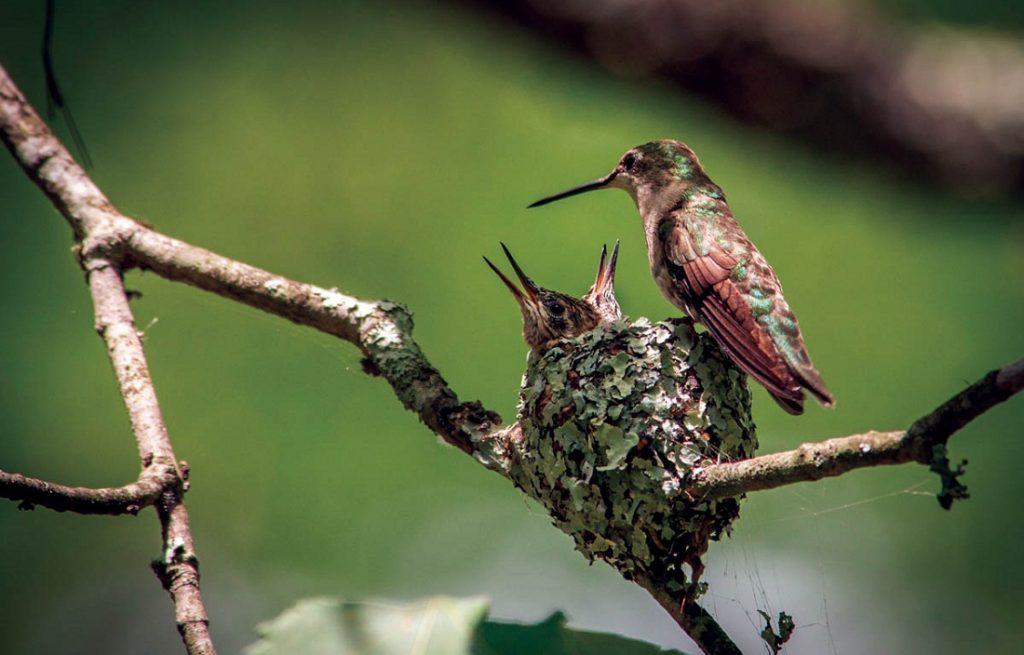

The species is little-studied and as a result not much is known about its life-cycle and behavior. The species is also seen in gardens and will come to feeders. Xantus’s hummingbird lives in a variety of habitats, including mountain forests, forest clearings, and woodlands. Very occasionally Xantus’s hummingbird is seen in the United States, with sightings being reported around once every two years, usually in California. Photo: Ron Knight (cropped / resized by ) Xantus’s hummingbird is endemic to (only found in) Baja California, a state in northeast Mexico which borders the U.S. Xantus’s hummingbird seen at Sierra de la Laguna, Baja California. The buff underparts, rufous tail and slightly curved bill of the Xantus’s hummingbird can be used to tell the species apart. It is occasionally seen in the southern United States during the summer. The white-eared hummingbird is a resident of Mexico and Central America. Xantus’s hummingbird is similar in appearance to the closely-related white-eared hummingbird. The forehead of the male is darker than that of the female.

The face is dark and has a white stripe running over the top of the eye to the back of the head. Its back is predominantly emerald green, its undersides buff and its tail rufous. Xantus’s hummingbird is a mid-sized hummingbird. This Mexican species is rarely seen in the United States. Like all hummingbirds it is a small nectarivore (nectar-eating animal) capable of hovering and flying in all directions, including backwards. Xantus’s hummingbird is named after the Hungarian zoologist John Xantus de Vesey (see Wikipedia). Where Found: Baja California, Mexico (occasionally seen in southern California).Animal Family: Trochilidae (the hummingbird family).(Main photo: Marlin Harms (cropped / resized by ) Read on to find out about this species, which is only found in Baja California, Mexico… It also encourages safer practices that will ensure their survival.Xantus’s hummingbird facts, pictures and information. It recognizes their importance in pollinating our flowers and identifies threats and situations that are harmful to them. National Hummingbird Day exists to celebrate these beautiful flying creatures. Some of these threats are pesticides, bad weather, big insects or predators, loss of habitat, and bad feeders, among others.Įven though these creatures have survived a long time without the direct and active intervention or help of man, this is currently changing as more information is being gathered on their vulnerability and threats to their survival. The hummingbird’s size makes them susceptible to being preyed upon or caught in dangerous situations that could be man-made or natural. Even with their aggressive nature, as many as 25 different pieces of Hummingbirds can survive and co-exist in the same place. The number of species is still growing, but about 360 species of Hummingbirds currently exist. Their reliance on nectar has helped the development of new hummingbird species influenced by the changes in the flowers. They are attracted to flowering plants, especially deep-throated flowers, and feed on the nectar for survival. Hummingbirds are those small colorful birds distinguished by their ability to hover mid-air rapidly flapping their wings – which produces the humming sound they are characteristically known for. Hummingbirds, as beautiful and precious as they are, are only found in The Americas, especially in North and South America. Their ability to have survived millions of years must have been difficult due to their size and structure. Their first public sighting was published in a journal by a French explorer on his travels to Brazil. The historical evolution of Hummingbirds has not been traced to any verifiable or scientifically researched source.


 0 kommentar(er)
0 kommentar(er)
